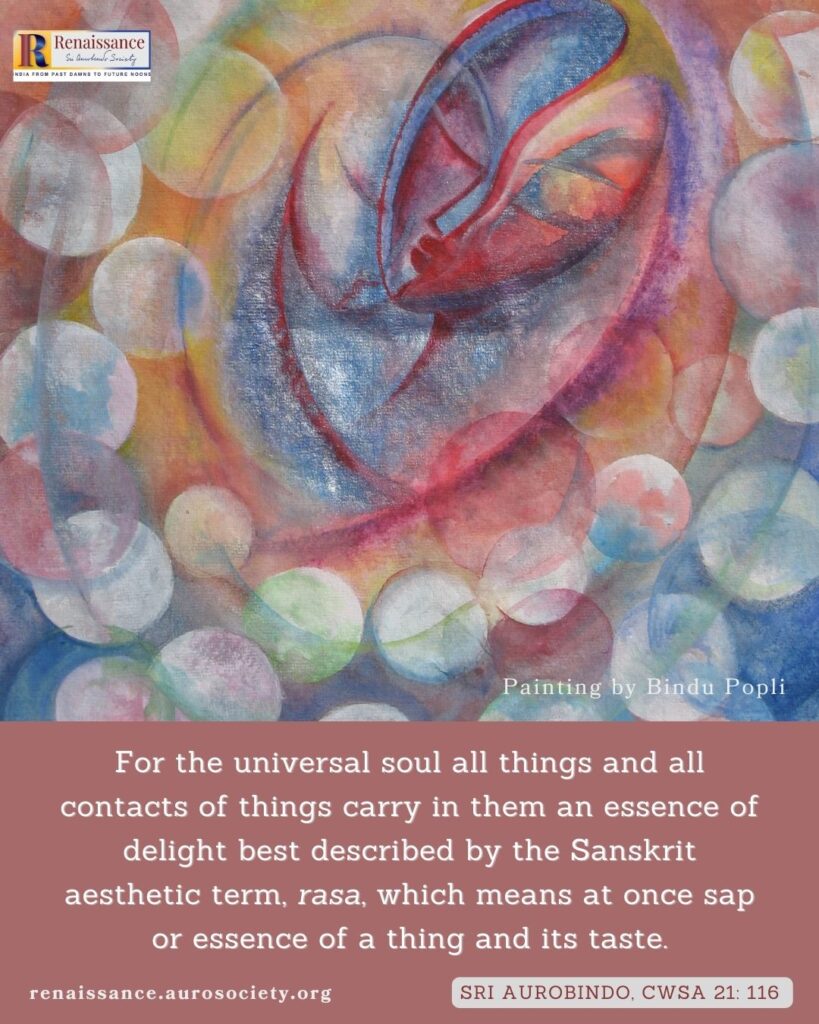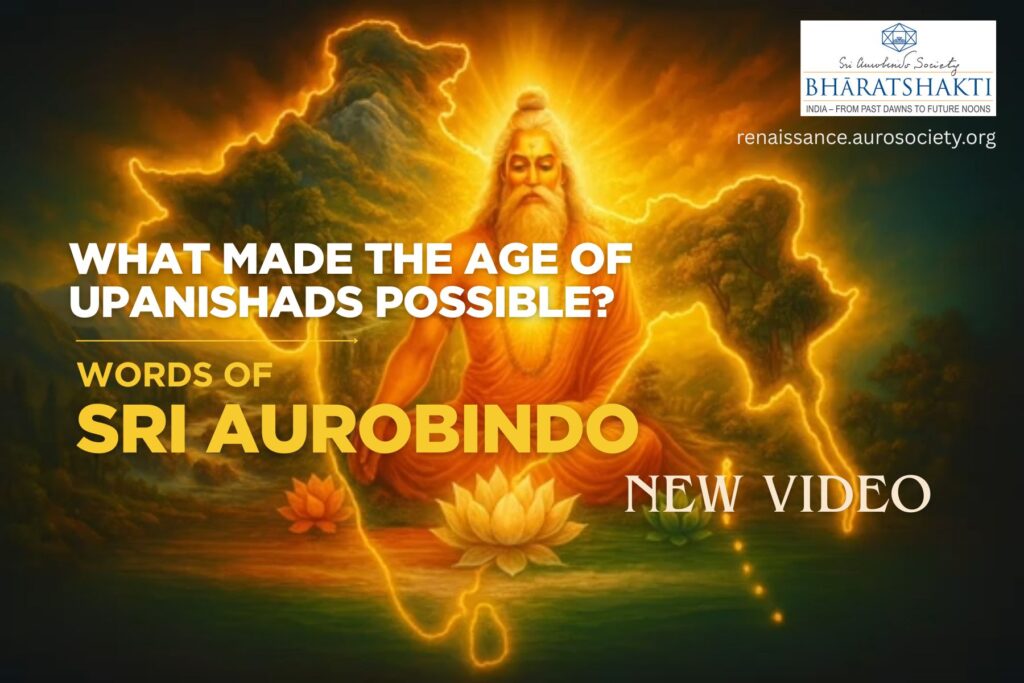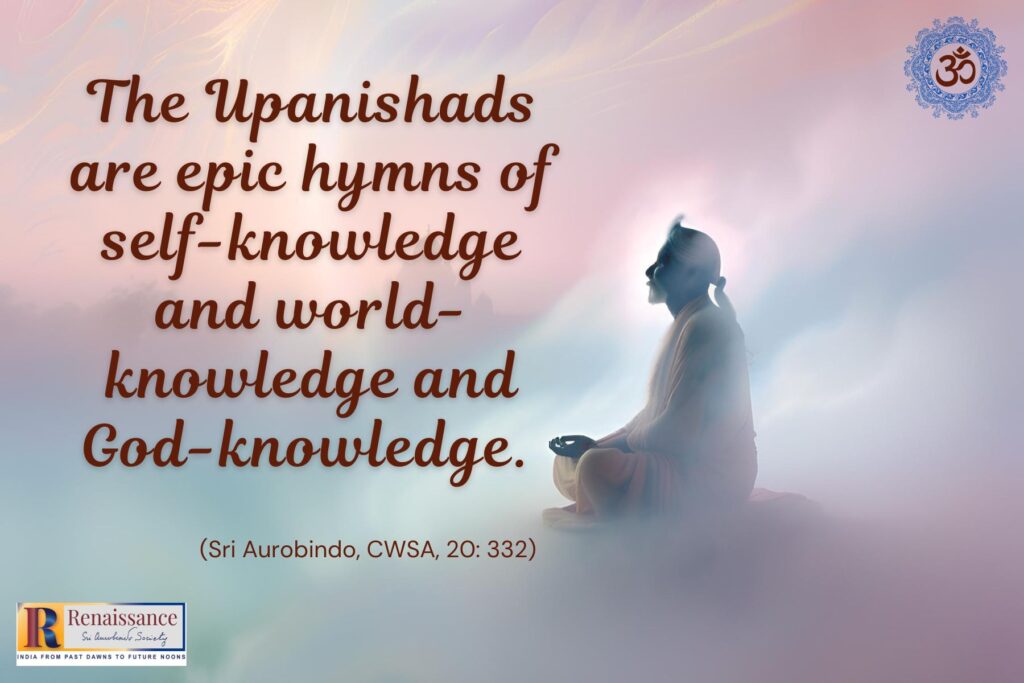Volume V, Issue 11-12
Author: V.K. Gokak
CONTINUED FROM PART 2
Editor’s Note: In this part, the author presents an ideal for an artist. The artist is one in whom the sattwic buddhi or the capacity for ideal sensibility predominates.

Seership, a Rare Gift
The seer has, in him, the sattwic buddhi or sattwic ahaṅkāra — the sublimated and purified consciousness. His limited and divided consciousness has, to a certain extent, been made whole by the emergence of the psyche. There has been a partial suffusion of the egoistic consciousness by the light of the psyche.
In other words, the seer possesses soul-knowledge and world-knowledge, the two processes to which every individual is subjected in this “vale of soul-making”. It is said that the period of apprenticeship may cover part of a life or a whole series of lives. Seership is a rare gift.
When this awareness projects itself on an object, it is seen in its dynamic aspect which Bhoja calls abhimāna. This is the seminal act, the act which makes any activity possible at all.
We are concerned here with aesthetic experience, the field of the artist’s gaze.
As noted earlier, the ego of the artist is not mere raw ahaṅkāra. It has been purified and sublimated to a considerable extent. The seminal act of perception begets, in the field of affectivity, a whole progeny of emotional moods or bhāvas. If it is the vision of the seer, these moods gradually evolve into states of ideal sensibility and, finally, of delight.

Self-knowledge and world-knowledge, the two processes at work in each one of these moods, finally disappear in delight, after depositing one more drop at least of amrita, of soul-knowledge, into the sattwic buddhi or the psychic entity evolving in the seer. The seer is thankful for what he has received and is in a state of repose or of the joy of creative activity till his vision issues forth again in another seminal act.
Every act of perception, projected on an object in the field of affectivity, is pregnant with possibilities of ideal sensibility, delight and creative activity. With the greatest or all-seer, these possibilities turn into certainties. Bhoja calls this state of ideal sensibility and delight, prema or love….Even when the seer is attached for the time being to outward objects or absorbed in them, it is his ātmarati, the love of his own soul, that manifests itself as the love of external objects.
The Brihadarnyaka (2.4.5) declares — आत्मनस्तु कामाय सर्वं प्रियं भवति (ātmanastu kāmāya sarvaṃ priyaṃ bhavati). When this love of the soul is directed towards outward objects, it is reborn into myriad bhāvas or emotions. These are again experienced by this very soul, the psychic entity. The love or abhimāna for various objects is etherealised into love absolute, or what we have called ideal sensibility and delight. Bharata also remarks that kāma or absolute love is the root bhāva or emotion from which all other bhāvas arise.
Bhoja even maintains that this seership is the only rasa, for it alone is the sthāyi or permanent attitude. Further, it alone is what is ultimately relished or experienced, — in its final phase of ideal sensibility and delight in which a seminal act of vision culminates, with itself as the taster. Rati (attraction, love) and other bhāvas — regarded as permanent moods or sentiments by Bharata — are but fugitive flames that feed this central fire of seership, of the sattwic consciousness. This seership which embodies itself in a perfect work of art or a perfect life makes all self-expression a process of fulfilment or self-evolution for the artist.
We need not commit ourselves to Bhoja’s nomenclature in this regard. Seership extends from the higher mind through the illumined mind, intuition and overmind to Supermind. And ahaṅkāra, abhimāna and śṛṅgāra are words with other associations and they need not be allowed to affect our exposition. It is the eye made quiet by the power of harmony and the deep power of joy, Carlyle’s seeing eye, that matters.
This exquisite and ideal sensibility has a transforming power.
It bathes the world in a new light and makes all things marvellous. It diffuses universal sympathy, love and calm. It alone recognises Beauty, not loveliness which has its opposite. This is the rasa, the अमृत amṛta, from which all bhāvas proceed. It is this which prepares the artist for a self-identification with his appointed theme. It is this sādhāraṇya or ideal sympathy that enables the artist to respond adequately to the determinants, — the rigours of his theme.
The rasika, pramātṛ or sahṛdaya, the man of ideal sympathy, is both the poet and the reader. He is that by virtue of his awareness, his seership. A man is but a barbarian without it. It is this awareness that enables the poet to see others as he sees himself, to have the necessary chit samvāda or absorption in the contemplated object.
…[In] the cultured and sensitive individual, it is the psyche that gradually gains ascendancy over the entire system. And the psyche is an evolving entity. It has yet to be extricated from the grip of vital and mental obsessions. This entity is, then, the seeing eye.
The Agnipurāṇa follows Advaitic and not Sankhya thought. It starts with Brahman. The blissful aspect of Brahman is called rasa. Bhoja argues on the basis of the reflection of the ātman (or the Individual Divine) in Prakriti or Nature and on ahaṅkāra as the first Prakritivikara or distortion in Nature. He considers ahaṅkāra as a guṇa or attribute of the ātman.
Agnipurāṇa holds that this ahaṅkāra is the first vikṛiti or distortion of ānanda or rasa which is the essential nature of the ātman. From ahaṅkāra is rati (attraction; love) produced and from rati all the other bhāvas arise. Bhoja, however, had argued that rati and all other bhāvas proceeded directly from ahaṅkāra.
The knot of the ego is the nexus of the whole being. The surface self of our normal consciousness is usually a mixture of mental and vital awareness and of the lower buddhi or reason, memory and imagination.

The normal consciousness is gradually sublimated. It is made sattwic with visitations from the subliminal and superconscient states when the individual opens himself to these influences and bends his energy to the task of self-evolution. He is, even without being aware of it, open to one or both of these influences in some centre of his being. Life cannot be completely spiritualised until the psyche replaces the surface self and assumes lordship over the entire being of the individual.
Normally, then, the artist is one in whom the sattwic buddhi or the capacity for ideal sensibility predominates.
It is this capacity that enables him to carry every emotional mood to its furthest extremity, to the point of ideal sensibility where even pain reveals to him the transcendental repose or delight that lurks behind it. Art has to convey an impression of this supreme repose or delight through the manifold sentiments that chequer human life.
The seership and genius of the artist consist in this very act of seminal perception and correspondent execution. It is in this sense that seership has been called rasa and the only rasa, — a primary attitude which bhāva-s like rati and hāsa (laughter) serve only to colour and enrich. Rasa has been made to connote the whole process of aesthetic experience and all the stages in the process, both individually and collectively.
CONCLUDED
READ PARTS 1, 2
About the author: Vinayaka Krishna Gokak was a well-known writer in Kannada language and a scholar of English and Kannada literature. He was honoured with the Jnanpith Award in 1990 for his epic in Kannada, titled Bharatha Sindhu Rashmi. This work deals with the Vedic age and is perhaps the longest epic narrative in any language written in the 20th Century. In 1961, Gokak was also awarded the Padma Shri from the Government of India for Dyava Prithvi.
~ Design: Beloo Mehra



